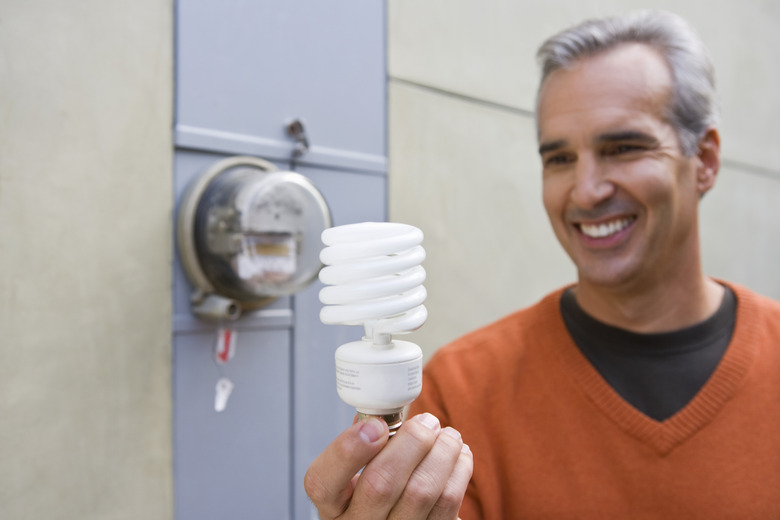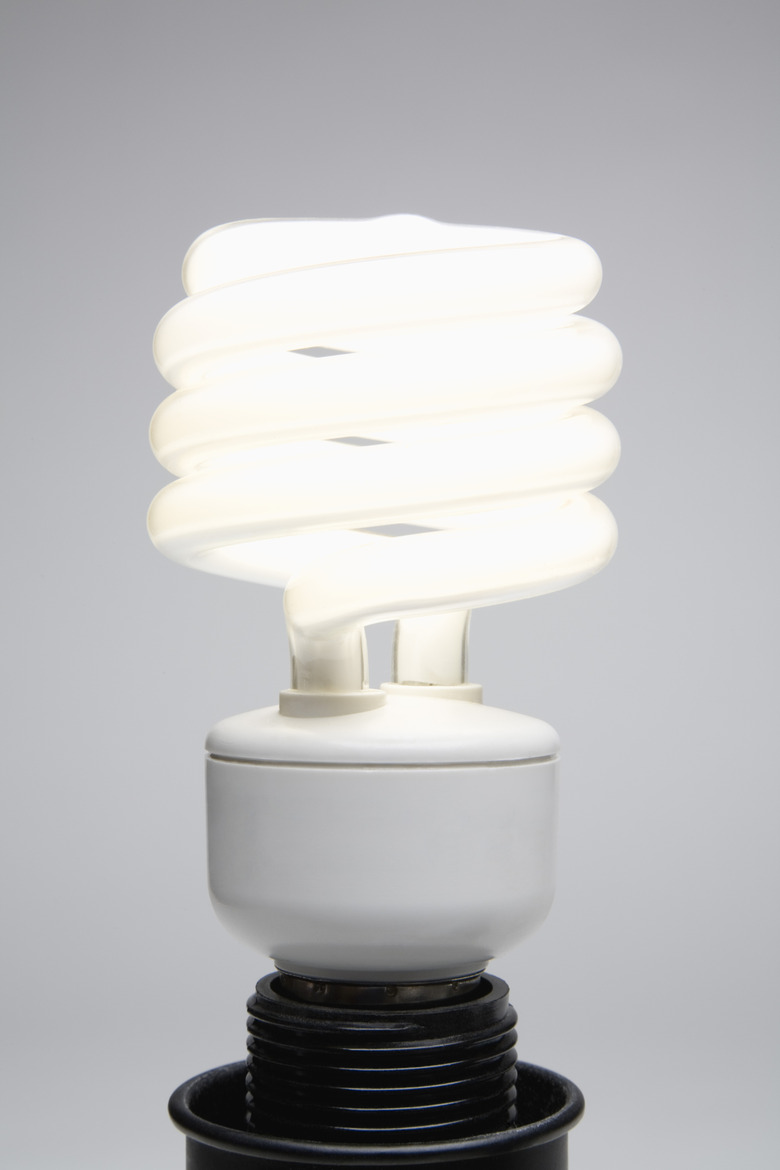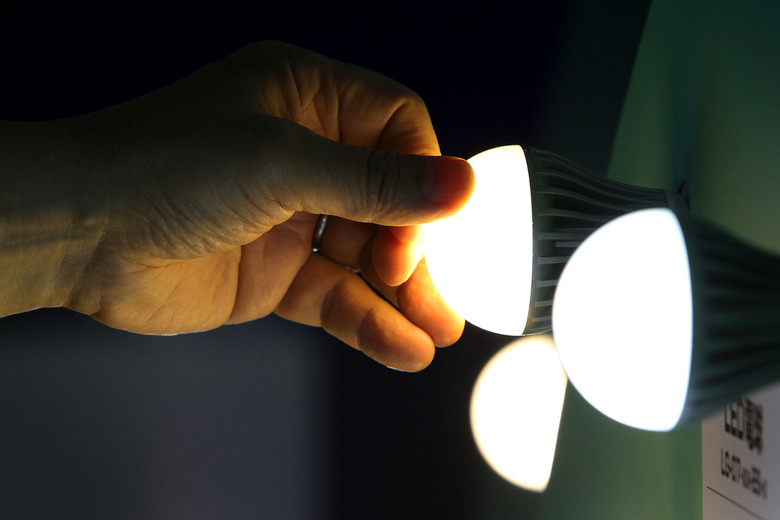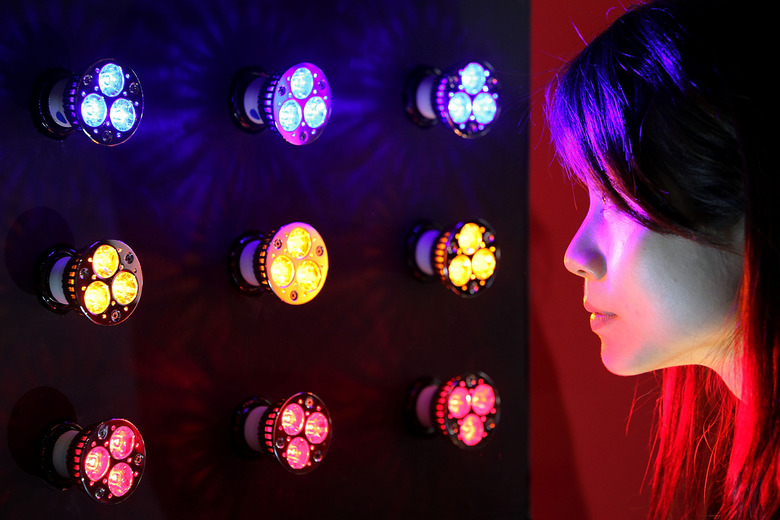LED Vs. CF Light Bulbs
Compact fluorescent lamps (CFLs) and light-emitting diode (LED) bulbs offer significant energy savings, so the choice between them is a matter of initial cost, intended use and personal preference.
How Compact Flourescent Lamps Work
How Compact Flourescent Lamps Work
A compact fluorescent lamp is a phosphorous-coated glass tube containing argon gas and mercury vapor. Electricity sent through the tube excites the mercury, setting off a chemical reaction that creates ultraviolet (UV) light. The phosphorus coating inside the tube absorbs the UV light and emits visible light.
How LED Bulbs Work
How LED Bulbs Work
Light-emitting diode bulbs contain a chip of semiconducting material, typically made of a mixture of aluminum, arsenic and gallium. When an electrical current passes to the chip, electrons move from the negative layer of the material toward the positive layer and release energy in the form of photons. (Photons are the most basic unit of light.) Light-emitting diode bulbs are constructed so that the photons released are concentrated and directed outward to create steady, visible light.
Energy and Cost Savings
Energy and Cost Savings
According to the U.S. Department of Energy, compact fluorescent lamps and light-emitting diode bulbs use 75 to 80 percent less energy than traditional incandescent bulbs. Both offer significant savings on your electricity bill. Fifteen-watt compact fluorescent lamps lasts an average of 10,000 hours, and lumen-equivalent 12-watt light-emitting diode bulbs last up to 25,000 hours. However, in 2012 the average price of an light-emitting diode bulb was 10 times that of a compact fluorescent lamp. So, compact fluorescent lamps have the overall savings advantage, but prices of light-emitting diode bulbs will likely decrease as more companies increase production efficiency and compete for market share.
Intended Use
Intended Use
Compact fluorescent lamps release some of their energy as heat rather than light, which can increase air conditioning costs during hot weather. Light-emitting diode bulbs remain cool to the touch, making them ideal for tight spaces, where heat buildup can reduce the life of a bulb. The longer life of an light-emitting diode bulb may also make it a more convenient choice for fixtures that are difficult to reach, because the bulb won't need to be changed as often as a compact fluorescent lamp.
Light-emitting diode bulbs provide light in only one direction. This is a drawback for light fixtures that are meant to provide light to an entire room but is more efficient for spotlights and recessed lighting. Some light-emitting diode bulbs are made with clusters of small light-emitting diode bulbs mounted inside diffuser lenses. This configuration helps to spread light in a wider beam.
Light Quality
Light Quality
Compact fluorescent lamps traditionally produce a blue-toned light that many people consider too harsh for home settings. Newer bulbs are created with phosphor blends that produce a more yellow, natural-looking light. Light-emitting diode color is tuned electronically and can precisely mimic the color of incandescent light.
Light brightness is related to the bulb quality and lumen rating rather than a specific technology. A good-quality light-emitting diode bulb and a good-quality compact fluorescent lamp produce light bright enough for home use. Most light-emitting diode bulbs can be dimmed; dimmable versions of compact fluorescent lamps are also available.
Environmental Concerns
Environmental Concerns
Many states require compact fluorescent lamp disposal at a recycling center. Also, broken compact fluorescent lamps should be handled with caution to avoid exposure to the mercury inside.
Light-emitting diode bulbs also contain toxins: lead, arsenic and gallium. Breaking an light-emitting diode bulb won't expose handlers to these toxins, but light-emitting diode bulbs should be disposed of at an electronics recycling center.
Cite This Article
MLA
Jacobson, Emily. "LED Vs. CF Light Bulbs" sciencing.com, https://www.sciencing.com/led-vs-cf-light-bulbs-1899/. 24 April 2017.
APA
Jacobson, Emily. (2017, April 24). LED Vs. CF Light Bulbs. sciencing.com. Retrieved from https://www.sciencing.com/led-vs-cf-light-bulbs-1899/
Chicago
Jacobson, Emily. LED Vs. CF Light Bulbs last modified August 30, 2022. https://www.sciencing.com/led-vs-cf-light-bulbs-1899/



